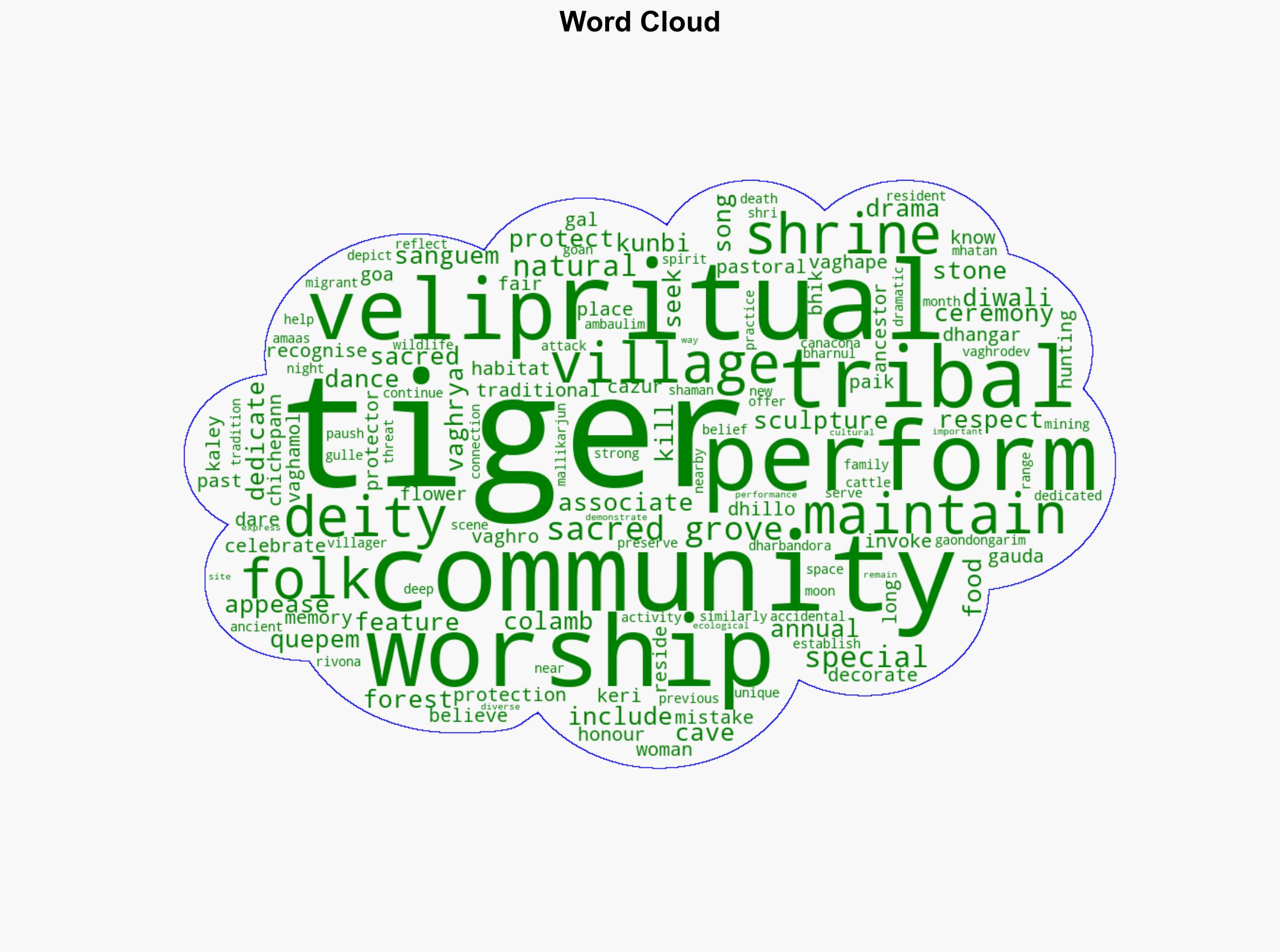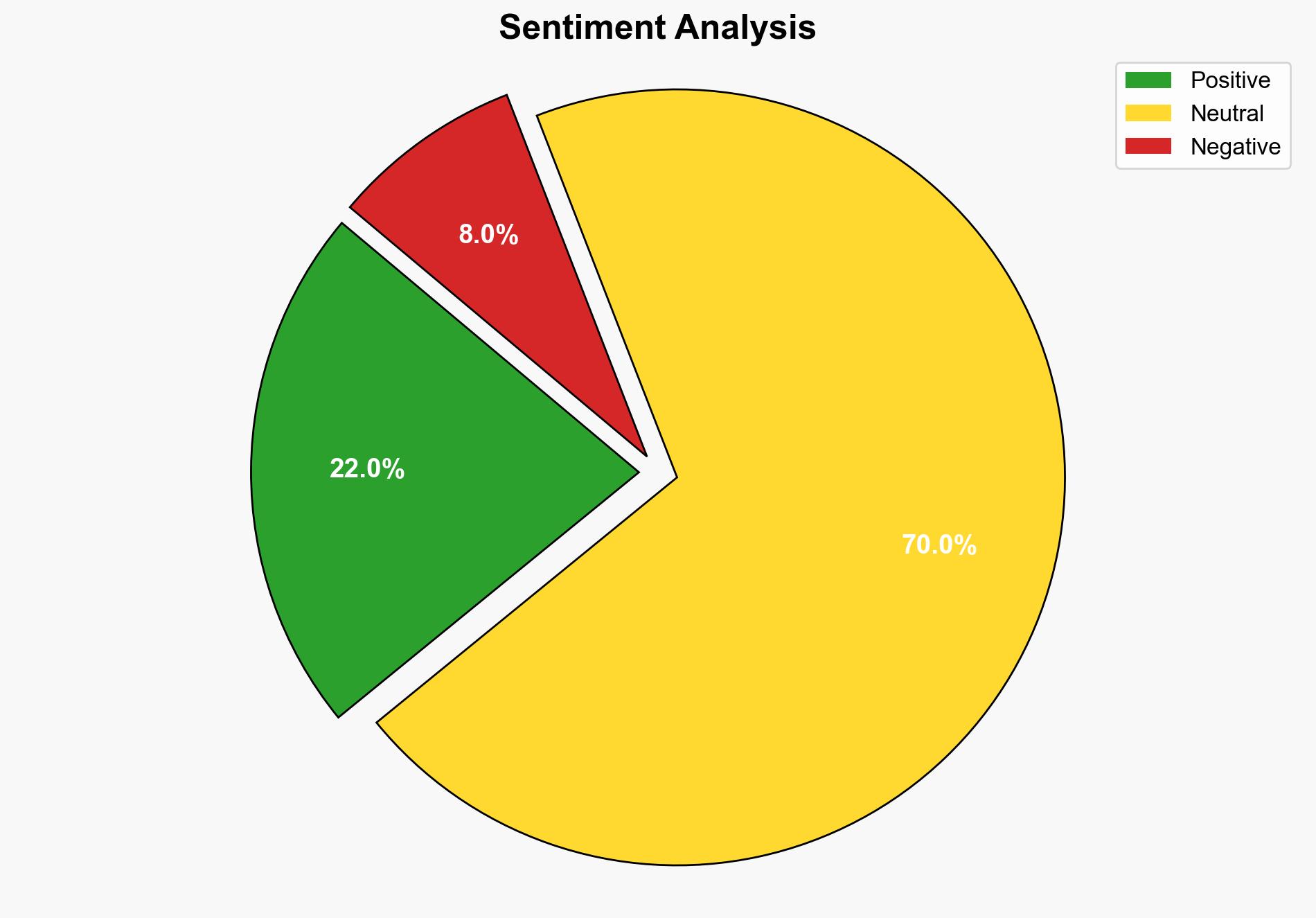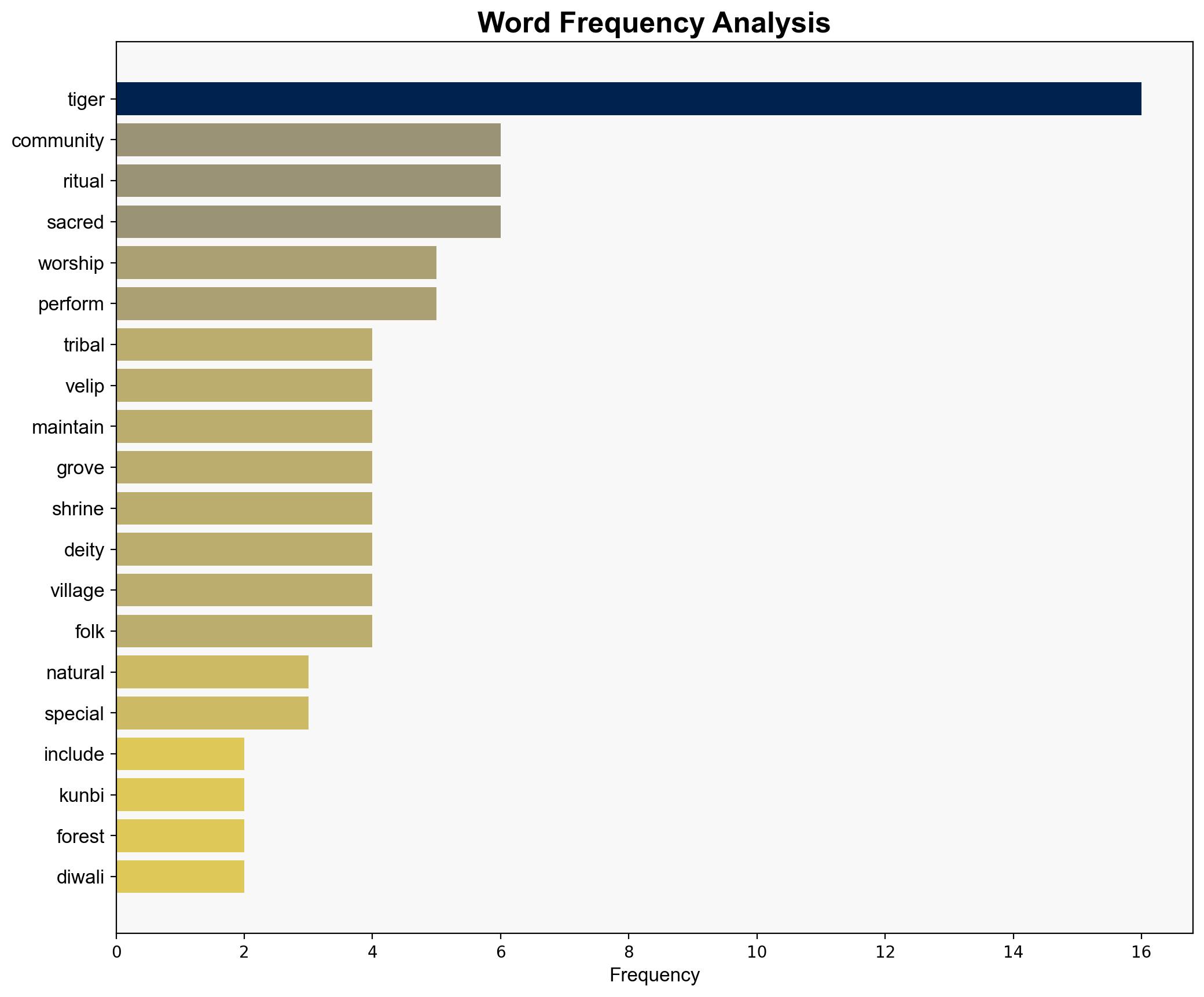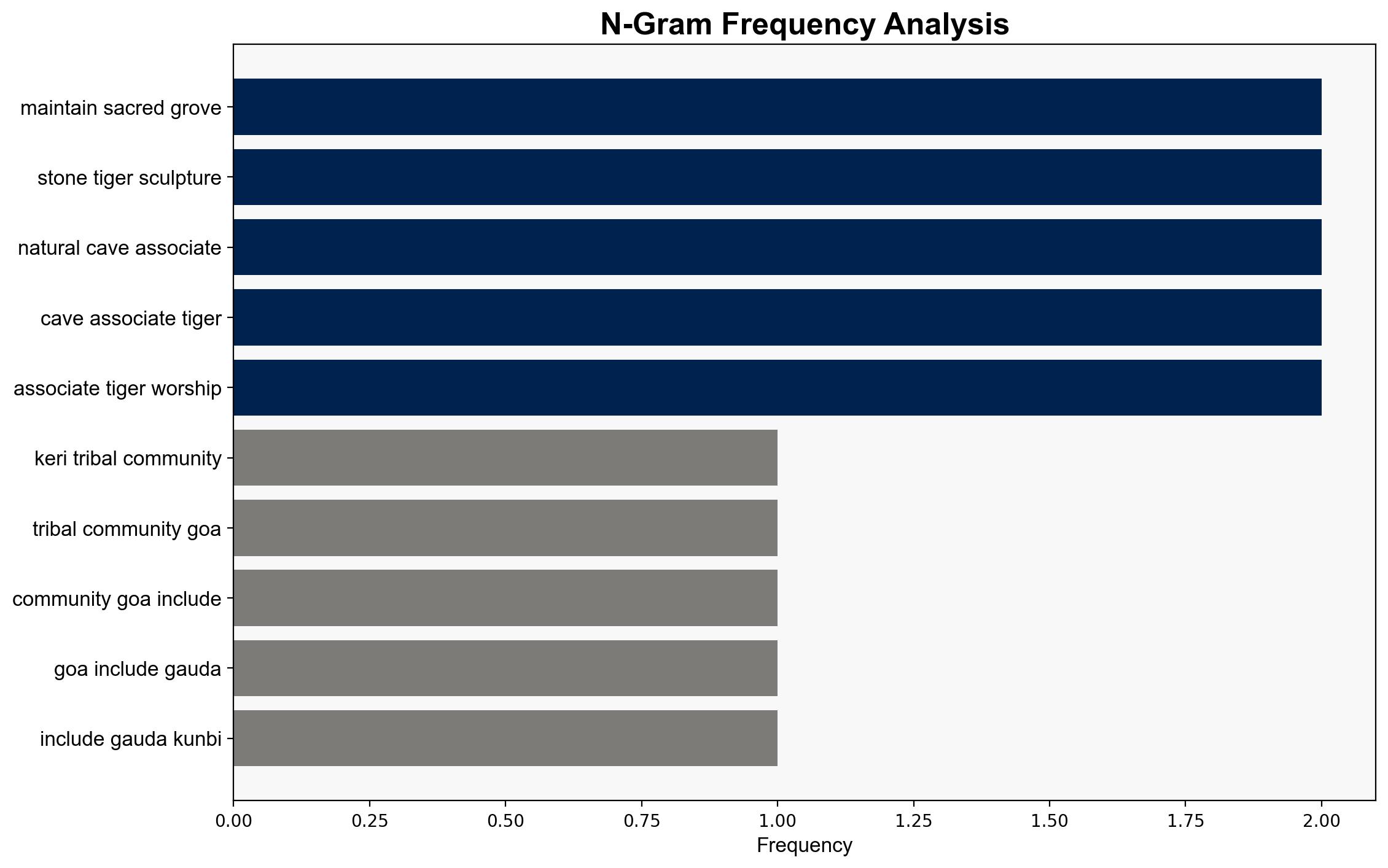Guardians of the green Goas tribal rituals during Diwali honour the tiger – The Times of India
Published on: 2025-10-19
Intelligence Report: Guardians of the Green Goas Tribal Rituals During Diwali Honour the Tiger – The Times of India
1. BLUF (Bottom Line Up Front)
The most supported hypothesis is that the Goan tribal rituals are primarily cultural practices aimed at preserving ecological balance and cultural heritage. This conclusion is drawn with a moderate confidence level due to the lack of direct evidence linking these rituals to broader socio-political movements. It is recommended to monitor these communities for shifts in ritual significance that could impact regional ecological or social dynamics.
2. Competing Hypotheses
1. **Cultural Preservation Hypothesis**: The rituals are primarily cultural, serving to preserve the community’s heritage and maintain ecological balance by honoring the tiger as a symbol of forest protection.
2. **Socio-Political Mobilization Hypothesis**: The rituals are a form of socio-political mobilization, potentially serving as a unifying force against external threats such as mining activities that threaten their environment and way of life.
Using ACH 2.0, the Cultural Preservation Hypothesis is better supported due to the consistent emphasis on traditional practices, ecological respect, and lack of explicit political messaging in the rituals.
3. Key Assumptions and Red Flags
– **Assumptions**: It is assumed that the rituals have remained unchanged and are not influenced by external political agendas. Another assumption is that the community’s primary concern is ecological preservation rather than political activism.
– **Red Flags**: The potential for these rituals to be co-opted by external political entities or for internal shifts in purpose to occur. Also, the lack of detailed information on the community’s response to mining activities is a blind spot.
4. Implications and Strategic Risks
– **Cultural Implications**: Continued preservation of these rituals supports cultural diversity and ecological awareness.
– **Strategic Risks**: If these rituals evolve into a form of socio-political protest, they could catalyze regional tensions, particularly concerning land use and resource extraction.
– **Economic and Ecological Risks**: Mining activities pose a threat to the sacred groves, potentially leading to ecological degradation and cultural loss.
5. Recommendations and Outlook
- **Monitor**: Establish a monitoring mechanism to track changes in the rituals’ significance and any emerging socio-political narratives.
- **Engage**: Facilitate dialogue between tribal communities and local authorities to address ecological concerns collaboratively.
- **Scenario Projections**:
– **Best Case**: Rituals remain cultural, fostering ecological conservation.
– **Worst Case**: Rituals become politicized, leading to regional unrest.
– **Most Likely**: Rituals continue as cultural practices with occasional socio-political undertones.
6. Key Individuals and Entities
The report does not specify individual names. The focus is on the Gauda, Kunbi, Velip, and Dhangar communities, and their interactions with local environmental and political landscapes.
7. Thematic Tags
cultural preservation, ecological balance, regional stability, socio-political dynamics





